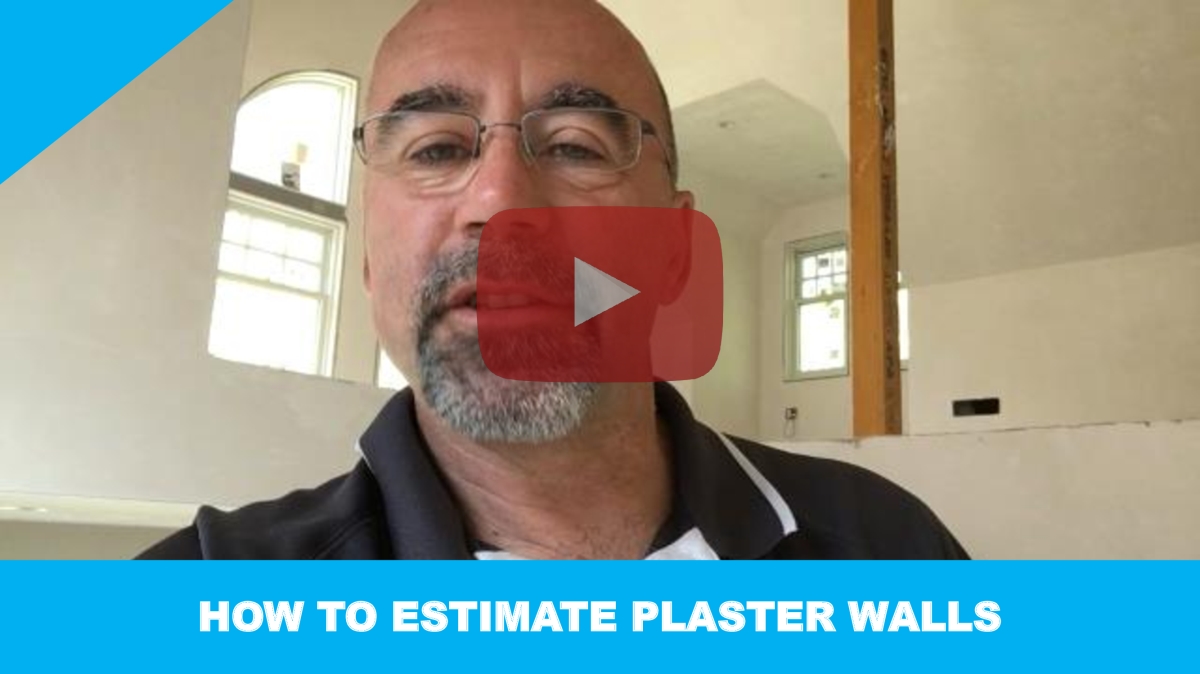
How to Estimate Plaster Walls
Today I am at a newly built carriage house, next to the main house, and I want to give you some tips on how to estimate plaster walls, and things to look out for.
A homeowner that we have worked for many times asked us to come in and finish this area for them.
So when estimating plasters walls, here are some things to consider and look out for;
If The Walls Have Dust Residue, Factor In The Cleaning Labor
The homeowner said it is all ready to go, that it had already been wiped down.
Everything looks great, and the first thing I did is wipe my hands against everything and noticed we have dust on everything.
That means that we have to factor in, if we are writing an estimate, labor to wipe down these walls, maybe a nice, moist, skimp rag, but we just make sure we get all of these contaminations off, because it is going to affect our finish paint.
These walls feel like glass, but they do have some residue over them.
Note Any Additional Labor On The Estimate
We want to let the homeowner know what we are doing, we don’t want to surprise them.
These are great things to point out in the walkthrough of the estimate or if they are not there, note it on the estimate that there is heavy dust on the wall –we are going to have to take time and wipe it down.
Check the pH of The Plaster
Secondly, we want to make sure the pH in these walls is good enough to prime.
Generally, if it has been sitting over 21 days in normal condition, you are good to go.
We will do a pH test, it is a really quick test you can pick up, that takes us minutes to do, but it will save you down the road from primer or paint failure when the moisture is trying to escape out of the plaster and ruin your finish.
Figure Out the Square Footage of the Surface to Be Painted
This is a typical estimating, just like you have been estimating painting a wall.
We are going to measure length x width, figure out our square footage and the average gallon of latex primer.
We are using a Benjamin Moore Latex Primer.
Figure Out Your Production Rates, If You Haven’t Already
We are also going to test our production rates in this project and what is really good about this it is completely empty, I can put one of the newer guys here, have him roll out and measure after he is done.
I always measure after we finish, then prior to, just in case they get interrupted while they are painting, they can stop right then, and we can measure from the beginning until that endpoint.
Often, just give them a room and say, “Hey, prime this out” and if they get interrupted during that time, it kind of skews the numbers.
If You’re Painting The Ceiling, Do It At The Same Time As The Walls
If we are going to be priming the ceilings and setting up in this place, we are going to have to set up some staging.
If we are painting the ceilings, let’s do it at the same time, let’s prime these out, let them dry, and give the ceilings one or two coats however you finish your ceilings.
Staging is already up, let the homeowner know this is the perfect time to do it, it would probably save them a couple of dollars in labor fees of setting up and taking down.
In our case, nothing is on the floor, so nothing is in the way.
In here, none of the windows have trim, electricals are in, and switch plates are not on.
This is a great time if the homeowner has their wall color, we would like to apply the first coat of wall color prior, so we will prime all the walls, prime all the ceilings, and then paint the ceilings and apply the first coat on the walls.
We will let the trim guys come in and install all the trims, we can caulk and fill the holes, do the prep and painting and that, and then apply the last coat of paint.
This approach is much quicker, much cleaner and it saves us time because there is nobody here.
Indicate That You’re Not Responsible For The Damage To The Finished Product By Other Trades.
Also, one thing we like to do on anything we are doing like this, is we put a rider on our estimate, that we are not responsible for other trades’ damage to the finished product.
If you have ever gone in and looked at a new construction, an addition, or a remodel, everything looks good, and then you get there and there is a hole in the wall, or something you have finished now has scuff marks on it, or a crack, a bang, or something like that.
Why should the painter be the one responsible?
Indicate that you will charge time and material and state your hourly rates so no one is surprised when you hand them a bill at the end.
The homeowner will know that you care and also, it brings you up that you are not going to work for free.
I hope some of these tips helped you? I am Ron Ramsden, a DYB Coach, helping you perfect your estimates.
If you need to reach me, find me at ron@dybcoach.com
I would love to chat with you.
Thanks so much and happy estimating!

